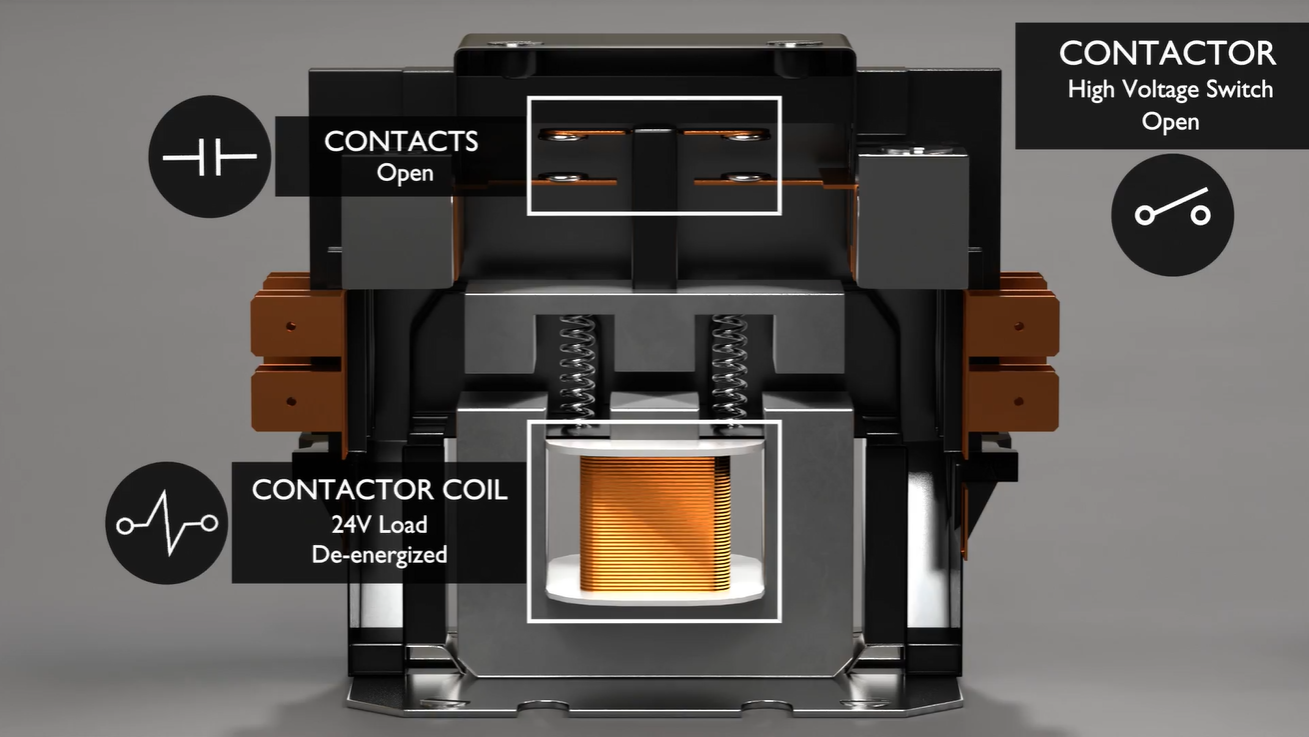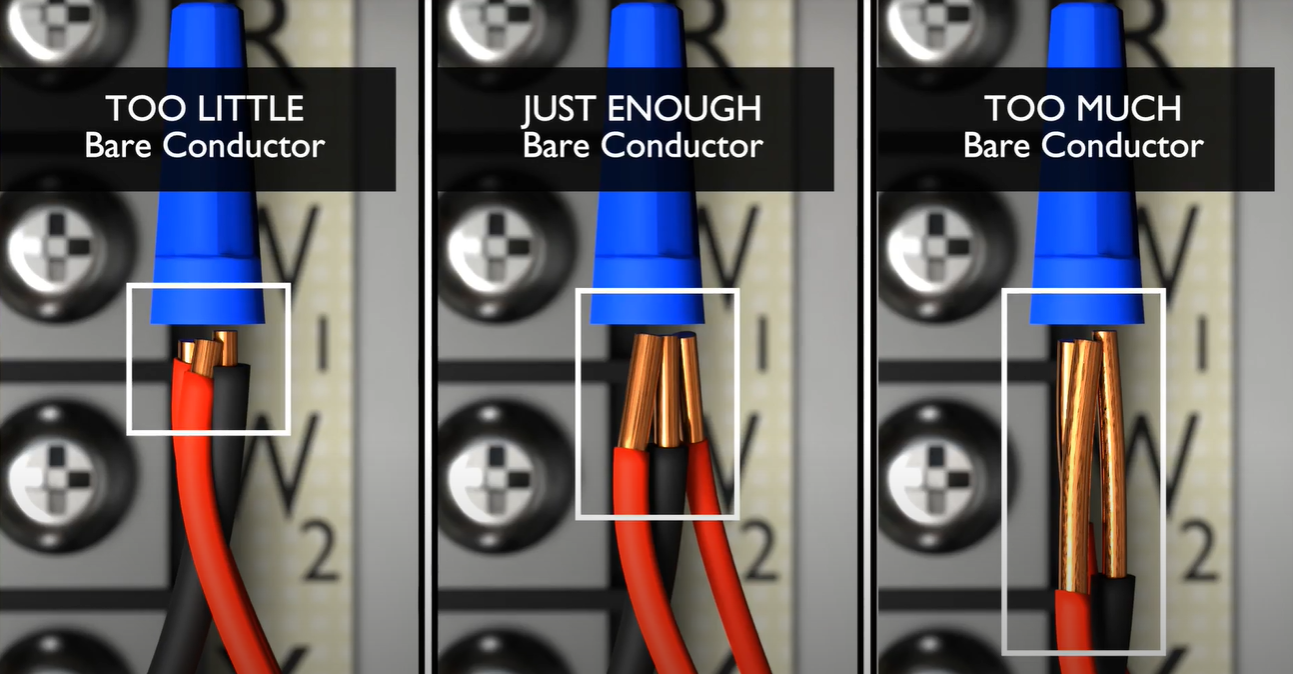Get Tech Tips
Subscribe to free tech tips.
Low-Voltage Wiring for Heat Pumps
Time and time again, low-voltage wiring gets the better of HVAC technicians everywhere. Sure, the wires are color-coded, but that doesn’t mean they’re easy to understand. On top of that, schematics sometimes look like ancient tablets written in hieroglyphics or something.

But that’s where HVAC School comes in. There is a new 3D animation video on the YouTube channel showing how the low-voltage electrical circuit works and how it’s wired. You can watch it below, but we’re also going to go over the same information in this article.
Brushing up on basics
Before we can begin to understand low-voltage wiring, we have to know how to read the wiring diagrams and understand what each component type does.
Switches and contacts
Schematics show how components are connected and whether connections are normally open or normally closed. These connections are at switches, which are power-passing devices that don’t consume power but merely allow it to move.
Normally open switches do not allow electricity to flow through, as the circuit is incomplete. A normally closed switch would allow electricity to flow because there is a path; it’s like a drawbridge that allows cars to cross a river.
There are many types of switches in low-voltage wiring, but a basic switch symbol will consist of two circles and a line. A normally closed switch shows that line connecting both circles. On the other hand, a normally open switch will have a line extending from one circle without making contact with the other.

Every type of switch will contain two circles and a line to show whether they’re normally open or normally closed. For example, a pressure switch looks like a basic switch symbol but with a bell shape extending from the bottom. A thermal switch has angled squiggly lines underneath, and a float switch has a circle extending from the bottom.

You’ll also see contacts in schematics, especially on relay connections. These may also be normally open or normally closed. As with switches, when contacts are normally open, there is no path for electricity to flow through.

Loads
In simple terms, loads are the parts of the circuit that actually do something. They take the power and transform it into some other kind of energy. (For example, a lightbulb is a load that takes electrical energy and converts it to heat and light energy.)
Unlike switches, loads consume power when they operate. Examples would be the reversing valve solenoid and the contactor coil. On schematics, a load may look like a coil or a line that goes up and down between two circles (as you’ll see in the contactor coil example below).
In the case of the contactor coil, the contacts up top are the switches, and they are normally open. Because they are normally open, there is no path for electricity to reach the equipment, meaning that the compressor and condenser fan can’t turn on.

When a call for Y sends 24v to the contactor coil and energizes it, the electromagnet pulls the contacts in, creating a path for electricity to go out to the outdoor components.

Thermostat wiring
The cool thing about thermostat wires is that they tend to be mostly color-coded. That is, G matches up with green, O matches with orange, etc. However, each wire has a specific function when it comes to low-voltage wiring. Here are the functions we typically use on a thermostat for a heat pump (colors are in parentheses):
- RH: constant 24v power for heating mode (red)
- C: common (blue)
- Y1: contactor (yellow)
- G: blower (green)
- O/B: reversing valve in cooling mode (usually orange; dark blue on Ruud or Rheem systems)
- W2: auxiliary heat, backup heat, or heat strips (white)
- ACC+: dehumidification (black) In this case at least

The electrical circuit
Now that we know a little bit about the low-voltage wiring of a heat pump, let’s go into the electrical circuits. We will explain how transformers work, how float and pressure switches can break power on certain terminals, and how the defrost board and thermostat are connected.
The source of all power: the transformer
Maybe that heading isn’t TOTALLY accurate. After all, solar panels and fossil fuels exist. But for our intents and purposes, the transformer is where our 24v power comes from.
A transformer is designed to take 230v from the power company and drop it to 24v. So, 230v comes in on the primary, and 24v goes out the secondary. Although power transfers from the primary to the secondary, the two don’t actually touch; they interact electromagnetically. After 24v exits the secondary, it goes to the integrated circuit board at SEC1 and SEC2.
That is where the trail begins…
Breaking circuits on R and Y
When 24v power leaves the transformer and goes to the integrated circuit board, it goes through a 5-amp fuse and powers the R terminal on the thermostat.
We can configure the float switch to break R or Y when it trips. When the float switch opens the circuit by breaking R, 24v power shuts off to the thermostat AND the condenser defrost control because the wires to the thermostat and defrost control are kept together under the same wire nut. The defrost board needs constant 24v power to run its timer and logic.
If the float switch breaks Y instead, then power can’t access the contactor coil, meaning that it can’t pull in the contactor. Without pulling in the contactor, an electrical path cannot be made to the compressor and condenser fan. As a result, those critical components fan can’t run.
The Y circuit also goes in and out of the high-pressure and low-pressure switches before it even reaches the contactor coil. As with the float switch, if either of those pressure switches open, Y would break, and the system would not run.
Auxiliary heat on W
The white wire that goes to the W terminal on the thermostat also goes to the W terminal on the defrost board from the terminal block, which is a junction point within the air handler.
When the backup heat kicks in, a signal also travels to the defrost board, which allows the defrost board to backfeed and bring on heat strips, too. In other words, both the thermostat AND the defrost board have the ability to bring on the backup heat.
Blower on G
The G terminal supplies constant 24v power to the blower motor. If the fan setting is set to ON instead of AUTO, there will be 24 volts of electricity going to the blower motor at all times.
Common on C
Common feeds directly from the secondary of the transformer to the thermostat wire and the defrost board. We need common because it’s the path back to the transformer; without common, we wouldn’t have a complete circuit, and the heat pump wouldn’t work.
Reversing valve on O or B
The orange wire goes from the thermostat to the terminal block near the transformer and then to the condensing unit, where it can energize the reversing valve solenoid.
ACC+ for dehumidification
When we use the ACC+ terminal for dehumidification, the wire runs right from the thermostat to the DH terminal on the terminal block. The blower can’t come up to full speed unless the DH terminal is energized.
Preparing the wires
Getting the wires all ready for operation will take some practice, but it becomes easier with time. You’ll want to make sure that you avoid nicking the conductors and that you have plenty of bare conductor space to work with (but not too much).
Stripping back the outer jacket of the thermostat wire is the first step, and it’s a deceptively tricky task. You’ll need a quality wire stripper for best results.
In any case, you start by making a cut at the top and then peeling the jacket back. When you’ve exposed enough of the wire, you can cut the peeled part of the jacket off. Be sure to cut the tips of the wires as well to get rid of any possible nicks you may have made when cutting into the jacket for the first time. Those nicks can lead to issues in the low-voltage wiring, including shorts and opens.
Then, you can remove the outer wire to expose the conductors. Do this carefully, and try to get roughly the same amount of conductor exposed across all the wires. When it’s time to put the wire nut on, the bare conductors should all be able to touch, but they shouldn’t be exposed past the wire nut.

Likewise, if you’re hooking the wires up to the terminal block, you will want the bare conductors to make sufficient contact without being exposed outside the terminal block. When you have too much bare conductor exposed, you risk causing a short circuit by making contact with another wire or metal object.

Short vs. open
“Short” is one of those words that seems to have lost its meaning in recent days. In many cases, people will refer to any type of electrical problem as a “short,” but that’s just not how it is.
A short is a specific condition that happens when the circuit is shorter than it should be. For example, if two wires rub out against each other and touch where the bare contacts have been exposed, they will draw high amperage due to the circuit being shorter than intended. That is the true definition of a short circuit.
In cases where shorts occur in circuits with fuses, the amperage may be high enough to cause the fuse the blow. When the fuse blows, it breaks the circuit so that electricity can no longer flow through and potentially cause a dangerous situation.
An open circuit happens when there is an incomplete path, such as in a case where a conductor is severed entirely. You can think of an open circuit as being similar to a switch that prevents electricity from flowing through a circuit. (However, in most cases, open circuits are unintentional.)
Improperly stripping back the wire jacket can cause you to cut the conductors. In extreme cases, a conductor may come apart and cause an open circuit.
Wire routing best practices
Routing your wires cleanly and properly is perhaps the best way to prevent short circuits. Short circuits happen when conductors are allowed to chafe or rub against other nearby objects.
So, when you’re routing your wires outside of the air handler, you’ll want to use the proper grommets to prevent the wires from rubbing out against the metal cabinet. It also pays to be mindful of metal stud work when routing wires between the air handler and thermostat. Some of those penetrations are sharp and can damage the conductors, which may eventually lead to short circuits.
The same principles apply to the high-voltage wires inside the condenser panel. It’s a good idea to keep the wires neat, routed through proper grommets, and kept out of the capacitor’s and contactors way. In both the low-voltage and high-voltage wiring, you also don’t want there to be too much slack in the wires, if possible but also not under pull out tension.
Inside the condenser, you’ll also want to make sure that the wires aren’t rubbing against the copper tubing, compressor, or reversing valve. It may help to use a zip tie to keep certain wires together and prevent them from loosely hanging around.
When running control wires out of the condenser, you’d also be wise to run them through conduits to avoid damage from landscaping tools like weedeaters.
Low-voltage wiring is a delicate and sometimes confounding thing that we all have to deal with. But it doesn’t have to live up to its challenging reputation if we get the basics down, understand what the wiring really accomplishes, and take measures to protect the conductors from damage.











Comments
To leave a comment, you need to log in.
Log In